- Home
- Technology
- Ricoh's Technology
- Free-Form Mirror and Deflection Technology for Ultra-Close-Range Projection
Free-Form Mirror and Deflection Technology for Ultra-Close-Range Projection
This is an innovative optical technology that has enabled ultra-close-range projection from a compact, lightweight projector.
Please visit your local website to find detailed information on Ricoh ultra-short-throw projector.
Solving all projector discomforts at once
Portable projectors used to cause much discomfort - they were hot and noisy, and shone on the presenters, dazzling them and casting their shadows on the screen. Installing the projector on the ceiling would solve many of the problems, but the expense would be high. That was where the ultra-short-throw projector came in, but it had its own problems. While its projection distance was short, the ultra-short-throw projector was large and heavy, unsuitable for portable use. Beyond that, cabling was also a problem - though the projector could be placed near the wall, the cables between the projector and PC obstructed the presenter.
Ricoh’s new ultra-short-throw projector has solved all of these problems, beating any conventional portable projector or general ultra-short-throw projector. A particularly noteworthy feature is Ricoh’s original technology, free-form mirror and deflection, which enables ultra-short-range projection from a small, lightweight body.
To project a 48-inch image, the new projector only needs to be 11.7 cm (4.6 in) from the back panel to the screen (26.1 cm (10.3 in) including the body) (See Figure 2). Projecting an 80-inch image requires just a distance of 24.9 cm (9.8 in) (39.3 cm (15.5 in) including the body) from the screen. While achieving the world's closest range projection(*), the new projector is much smaller and lighter than any conventional ultra-short-throw projector. The easily portable ultra-short-throw projector has finally become a reality.
(*) Among all mirror reflection-type, ultra-short-throw projectors (as of September, 2013, Ricoh Survey).
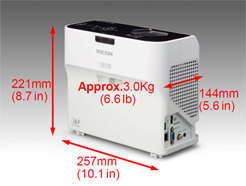
Figure 1
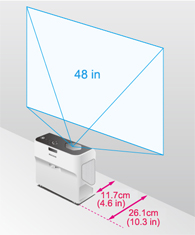
Figure 2
Three key technologies enabling ultra-close-range projection from a small, lightweight body
Generally, a projector magnifies an original image formed on a micro display - a display panel of less than one inch diagonally - by nearly 100 times, and projects it onto the screen. To shorten the projection distance while keeping a large projection size, the optical projection system (an assembly of optical components including lenses) needs to support a wide viewing angle. Generally, multiple glass and plastic lenses are combined and large-diameter lenses are used to achieve the target performance. Thus, the wider the viewing angles, the larger the lenses and the more the number of the lenses. The requirements to widen the viewing angles of a projector are inversely proportional to reducing the projector’s size and weight.
1. Ultra magnification using a concave mirror - a reversal idea
Usually, beams are spread by reflection on a convex surface. A convex mirror is placed in the middle of beam paths, so it has to be large enough to receive the spreading beams (see Figure 3 (a)). Using a concave mirror, Ricoh has successfully reduced the size of the optical system (Figure 3 (b)).
With a concave mirror, an intermediate image is formed to suppress the spread of luminous flux from the lenses. The intermediate image is then enlarged and projected at one stretch with the reflective and refractive power of the concave mirror. This technology enables a large image to be projected an ultra-close distance. Our imagination exceeded common sense. The reversal idea - the concave mirror - enabled an ultra-wide viewing angle while keeping the optical system small.
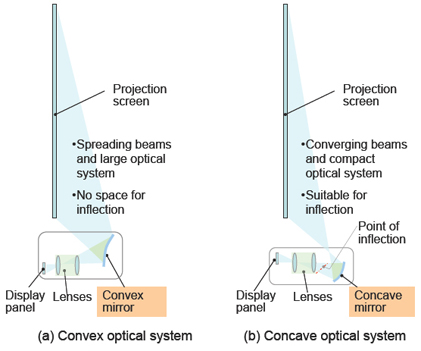
Figure 3: Optical systems based on convex and concave mirrors
2. A free-form concave mirror for further downsizing
Designing an ultra-short-throw projector involves many technical challenges - shortening the projection distance, eliminating distortions, and keeping resolution high. Pursuing ultra-wide viewing angles inherently increases image distortion and lowers resolution. In the past, we addressed this issue using aspherical lenses for compensation to prevent the image from degrading.
There were limitations, however, to the method just using aspherical lenses. As a breakthrough, Ricoh provided the concave mirror with a free-form surface. The newly developed free-form mirror greatly increased the degree of freedom of design, enabling us to meet two contradictory requirements - smaller size and high optical performance. Using Ricoh’s already famous high-precision plastic molding technology, we attacked the limit of processing precision of the optical components. Our efforts led to the birth of the optical system for ultra-close-range projection.
3. An inflected optical system to reduce size based on a unique vertical structure
Beyond the free-form mirror, Ricoh developed an inflected optical system in which a reflective mirror is placed between the lenses and the free-form mirror. By folding the beam path in the optical system, we were able to significantly reduce the volume of the body.
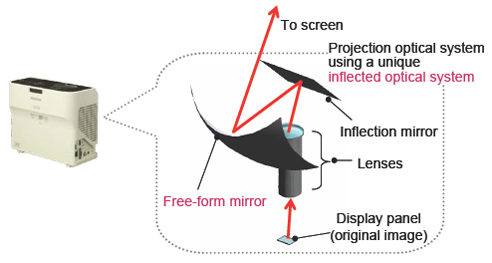
Figure 4: Free-form mirror and inflected optical system
Further, the vertical body structure contributes to smaller size. This design allows the projector to be brought closer to the screen, enabling a large image (a 48-inch image in the closest range) not possible with a conventional ultra-short-range projector based on curved-surface mirrors. With the very small footprint, the new projector allows the effective use of space.
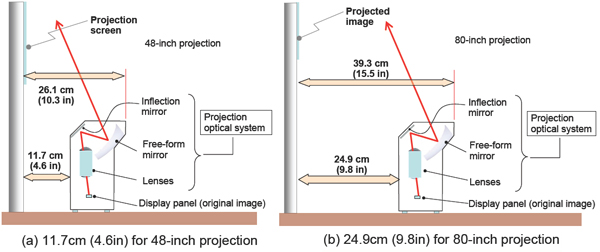
Figure 5: Projection size and distance
Sorted by : field “Display / Projection” | product type “Projectors / Interactive whiteboards”
